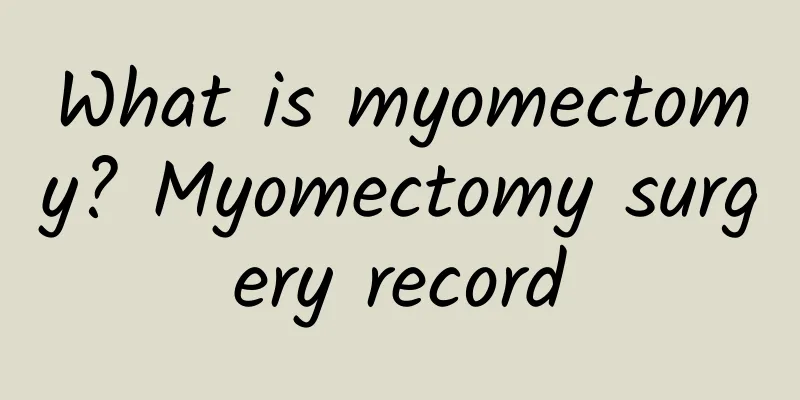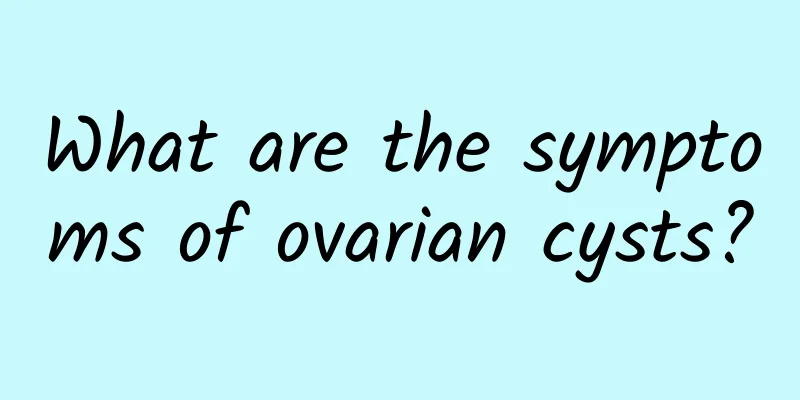What is myomectomy? Myomectomy surgery record

|
What is myomectomy? Uterine fibroids are one of the most common tumors in the female reproductive organs, and are more common in women of childbearing age. They are formed by the abnormal growth of smooth muscle cells in the myometrium of the uterus. For some patients with obvious symptoms or infertility, myomectomy is a common treatment method. So, what is myomectomy? The following will introduce it to you in detail. Myomectomy is a surgical procedure to remove uterine fibroids. The procedure is usually performed using a laparoscopic or laparotomy incision. Laparoscopic surgery is relatively less invasive and recovery is faster. Laparotomy is suitable for patients with larger, more numerous fibroids or those with comorbidities. During the operation, the doctor will visually guide the removal of the fibroids accurately through incisions or instrument catheters in the patient's body. After the operation, the doctor will treat the removed area to ensure wound healing. The entire operation usually needs to be performed under general or spinal anesthesia. Myomectomy surgery record: Patient information: Female, 35 years old, uterine fibroid size approximately 5cm. Surgery time: April 10, 2022, 10 am. Surgical area: gynecological operating room, sterile operating environment. Surgical method: laparoscopic surgery. Surgical procedures: 1. After the patient enters the operating room, assess the patient's condition and anesthesia indications. 2. Give the patient general anesthesia and perform local disinfection before surgery. 3. Make a laparoscopic incision in the patient's lower abdomen and insert a laparoscope. 4. Under visual guidance, find the uterine fibroids and remove them. 5. Check the excision site to ensure there is no bleeding. 6. Repair the incision and ensure it heals. Surgical outcome: The operation went smoothly and the uterine fibroids were removed successfully. Popular Science Introduction: Uterine fibroids are a common benign gynecological tumor. When symptoms occur or affect fertility, uterine fibroid removal is an effective treatment. Uterine fibroid removal is performed using laparoscopy or laparotomy. During the operation, the doctor will use visual guidance to accurately remove the uterine fibroids and ensure the healing of the incision. After recovery from the operation, the patient's symptoms will be relieved, and it can also improve fertility for patients with infertility. However, patients need to undergo a comprehensive evaluation before surgery, choose the appropriate surgical method, and do a good job of postoperative examination and care after the operation to ensure the effectiveness of the operation and the health of the patient. If you have any problems related to uterine fibroids, it is recommended that you consult a professional doctor in time to obtain a more appropriate treatment method. |
<<: What are the symptoms of uterine fibroids? What are the symptoms of uterine fibroids?
Recommend
Is endometriosis curable?
Is endometriosis curable? 1. Endometriosis is gen...
How to check for irregular menstruation
How to check irregular menstruation? Irregular me...
Is uterine fibroid a tumor? Doctors explain uterine fibroids from 3 aspects
Uterine fibroids are benign tumors caused by abno...
Is endometrial tuberculosis contagious?
Is endometrial tuberculosis contagious? The answe...
Baby's poor appetite, appetizing food, nutritional bonus
Summer is here! Not only do adults lose their app...
What to do if trichomoniasis vaginitis still itches after taking medication
What should I do if Trichomonas vaginitis still i...
What causes early menopause in women?
Early menopause in women may be caused by a varie...
To prevent cervical erosion, pay attention to keeping the female vulva clean
Keeping a happy spirit can enhance disease resist...
What is the category of ovarian cysts and what are the symptoms
What category does ovarian cyst belong to and wha...
The best period for painless abortion
The best time for painless abortion is usually 6 ...
What to do if the vaginal discharge is abnormal
Abnormal vaginal discharge may be caused by IUD i...
How to effectively treat female vulvar itching
The harm caused by vulvar itching is relatively l...
To lose weight, you need to increase your basal metabolic rate! Drinking more water is not enough, try these tips to promote metabolism
If you want to lose weight successfully, you must...
Million-dollar YTR "Beard" reduced his body fat by 11% in 3 months! Dr. Wu Zhenjin: 4 tips for successful weight loss
The million-dollar YouTuber "Huzi" has ...
You don’t have to starve yourself to lose weight! Change the order: Eat vegetables first and then drink soup, it is easier to lose weight
Losing weight has always been a topic of concern ...









